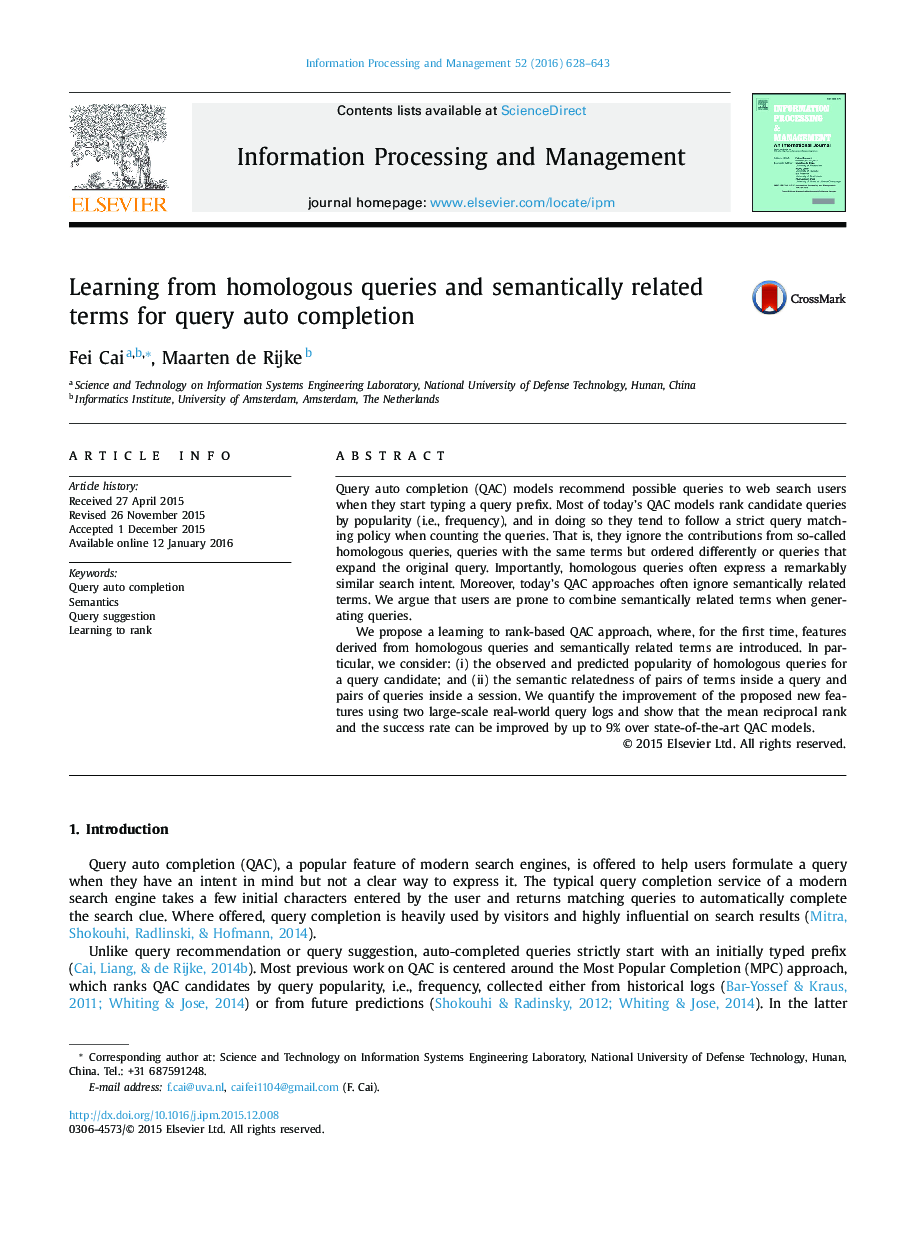| Article ID | Journal | Published Year | Pages | File Type |
|---|---|---|---|---|
| 514947 | Information Processing & Management | 2016 | 16 Pages |
•We propose a learning to rank based query auto completion model (L2R-QAC) that exploits contributions from so-called homologous queries for a QAC candidate, in which two kinds of homologous queries are taken into account.•We propose semantic features for QAC, using the semantic relatedness of terms inside a query candidate and of pairs of terms from a candidate and from queries previously submitted in the same session.•We analyze the effectiveness of our L2R-QAC model with newly added features, and find that it significantly outperforms state-of-the-art QAC models, either based on learning to rank or on popularity.
Query auto completion (QAC) models recommend possible queries to web search users when they start typing a query prefix. Most of today’s QAC models rank candidate queries by popularity (i.e., frequency), and in doing so they tend to follow a strict query matching policy when counting the queries. That is, they ignore the contributions from so-called homologous queries, queries with the same terms but ordered differently or queries that expand the original query. Importantly, homologous queries often express a remarkably similar search intent. Moreover, today’s QAC approaches often ignore semantically related terms. We argue that users are prone to combine semantically related terms when generating queries.We propose a learning to rank-based QAC approach, where, for the first time, features derived from homologous queries and semantically related terms are introduced. In particular, we consider: (i) the observed and predicted popularity of homologous queries for a query candidate; and (ii) the semantic relatedness of pairs of terms inside a query and pairs of queries inside a session. We quantify the improvement of the proposed new features using two large-scale real-world query logs and show that the mean reciprocal rank and the success rate can be improved by up to 9% over state-of-the-art QAC models.
